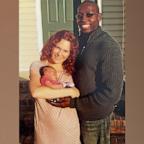Bush Plan Creates Holiday Flight Lanes
Plan will also reduce the number of flights at New York's busiest airport.
Dec. 19, 2007 — -- In an effort to ease flight delays in the coming weeks, the Bush administration announced today that military airspace would open to commercial flights to create "holiday express lanes" in the sky.
The plan will also reduce the number of flights in and out of New York City airports during busiest traffic times.
Travelers this year endured record-setting delays at the nation's airports, with 75 percent of those delays traced back to congestion in New York.
The three airports in the New York City area -- JFK, LaGuardia and Newark -- have the worst records for on-time arrivals in the country, according to the Federal Aviation Administration, and those delays spread like a virus to airports across the country.
Beginning in March, the number of flights at JFK will be capped at 82 or 83 per hour, down from the 90 to 100 flights per hour the airport saw this summer. Those caps will be in place for 2008 and 2009, said Transportation Secretary Mary Peters.
"I had hoped to be able to avoid caps but the truth is, for the short term, for the next few years, this is the solution that will provide some relief for travelers," Peters said.
Airlines will be able to shift flights to less congested times, allowing 50 more flights per day than were offered last summer, just more reasonably spaced, Peters said.
Hourly caps will also be set at Newark International Airport, so that flights from JFK won't be shifted there. Those caps have yet to be determined.
Business travelers may not like the caps, since they usually prefer to travel early in the morning or at the end of the day.
Peters also said that military airspace would be opened to commercial flights on the East and West coasts during busy holiday travel times from Dec. 21 to Jan. 2.
"These holiday express lanes in the sky will give airlines the wiggle room they need to avoid backups, evade weather and dodge delays," Peters said.
Aviation officials tested the plan, opening military airspace over Thanksgiving weekend, and said there were fewer flight delays than expected. But skeptics said that was because of good weather, not the added flight lanes.
The caps may mean fewer delays for travelers, but it might also mean higher prices.
"If there are fewer flights coming in, you can bet the airlines are going to charge higher prices. There are going to be fewer seats," Travelocity editor Amy Ziff said.
The flight cap is not a popular idea with many officials in the New York area, who say the real way to ease congestion is to update the FAA's antiquated air traffic control technology, which would be expensive, and build new runways, which is controversial among people who live near the airport.
"Increasing the capacity of the airports is the right answer for New York and … we think the right answer for the country," said Anthony Shorris, the executive directory of the Port Authority of New York and New Jersey, which oversees the air hubs.




